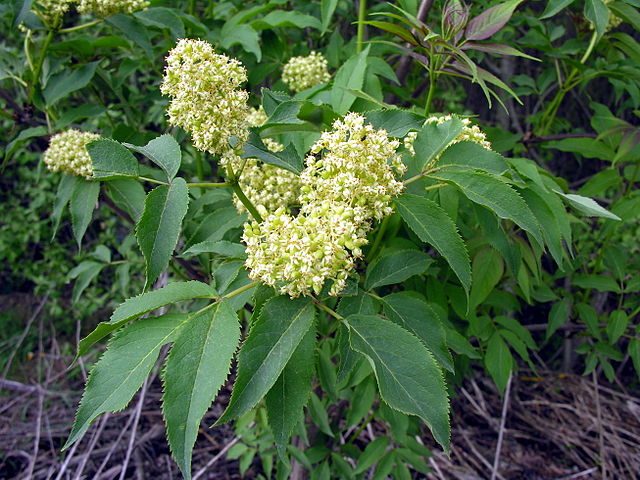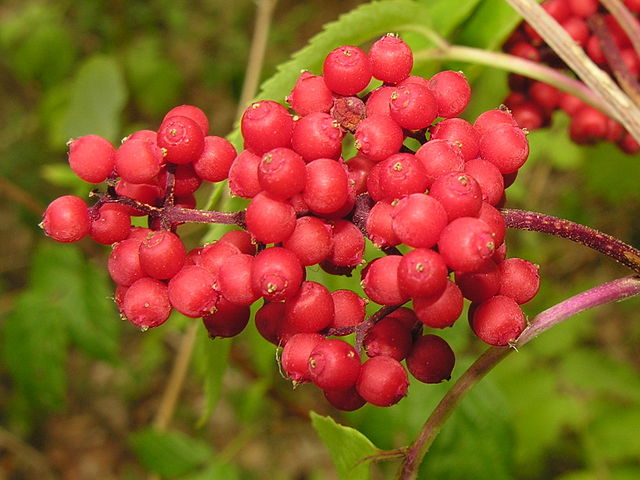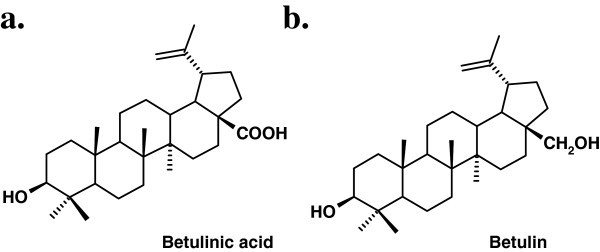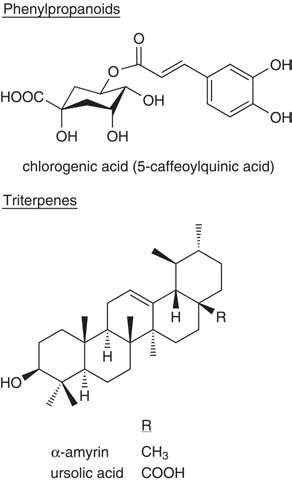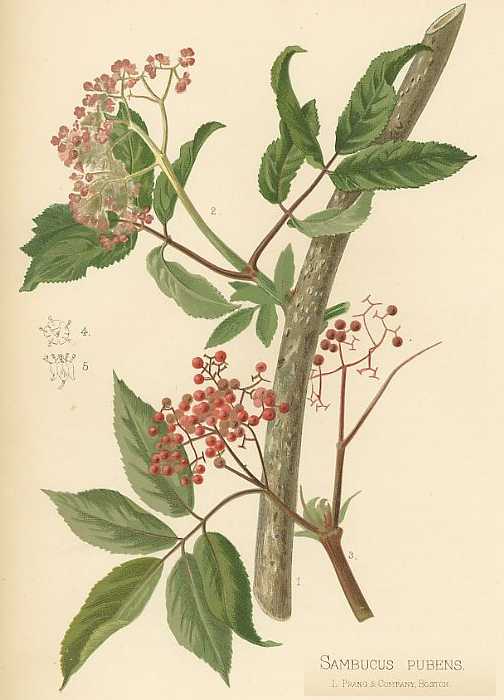|
Actions:
- One of the main medicinal benefits of red elderberry are its antiviral qualities. Bioflavenoids in the extracts of elderberry may prevent viruses from entering cells.
- The berry extracts have long been recommended for flu. Elderberry extracts inhibit Human Influenza A (H1N1) infection in vitro. Both 5,7,3',4'-tetra-O-methylquercetin and dihydromyricetin are antiviral.
- Betulin, found in the bark, is anticarcinomic, antifeedant, antiflu, antiHIV, antiinflammatory, antitumor, antiviral, aphidifuge, cytotoxic, hypolipemic, a prostaglandin-synthesis-inhibitor, and a topoisomerase-II-inhibitor.
- Betulinic acid, also found in the bark, is anthelmintic, antiHIV, antibacterial, anticancer, anticarcinomic, antiedemic, antiinflammatory, antileukemic, antimalarial, antimelanomic, antinociceptive, antiplasmodial, antitumor, antiviral, apoptotic, cytotoxic, a phospholipase-A2-inhibitor, and a prostaglandin-synthesis-inhibitor.
- Elderflowers contain flavonoids composed mainly of flavonol glycosides (astragalin, hyperoside, isoquercitrin, and rutin) and free aglycones (quercetin and kaempferol); phenolic compounds (chlorogenic acid); triterpenes including α- and β-amyrin; and triterpene acids (ursolic and oleanolic acids) among other constituents.
- Red elderberry bark and roots are reported to contain the triterpenoid ursolic acid. Ursolic acid is reported to be antidiabetic and hypoglycemic, antinflammatory, antileukemic, diuretic, hepatoprotective, to have antitumor properties and be a cancer preventative, to be a central nervous system depressant, to be cytotoxic, and a piscicide.
|



